
Below is a recent reflection by D-Lab: Development students on their January travel to Botswana to work with These Hands and two rural communities. Pre-pandemic January now seems like a lifetime, rather than a couple of months, ago. As of the date of this posting, the number of recorded COVID-19 cases remains in the teens, and the government has extended the state of emergency from 28 days to six months, thereby immobilizing both These Hands and the villages and innovations centers with which they work. These Hands Co-Founder and CEO Thabiso "Blak" Mashaba writes, "I am worried about [the villages and innovation centers] and sometimes die a little inside because I can't do much but encourage them to be safe and look forward to the time when we will get back to work on our journey of improving their livelihoods."
Who Are We?
Three MIT students from D-Lab and a documentary photographer, set out to Botswana for the month of January as part of MIT D-Lab: Development class. The team consisted of Amelia Seabold, a second-year studying Biology and Urban Studies, Anna Johnson, a third-year studying Chemical and Biological Engineering, Meghana Vemulapalli, a second-year studying Mechanical Engineering, and trip leader Leonie Marinovich, a South African native who teaches photography at the Harvard Extension School. Leonie is an experienced photographer who has worked across the African continent.
Preparing for the excursion, and upon arrival in Botswana, we worked with an incredible team of people. Thabiso "Blak" Mashaba, founder of These Hands, was our community partner and point person. He organized the workshops and projects that we helped with in January. He has a huge heart and founded These Hands in order to develop D-Lab-style “Creative Capacity Building projects to encourage technological and cultural innovation and entrepreneurship in rural Botswana,” according to his website. His team for the Creative Capacity Building workshop consisted of Khomtsa Sixpence, Peter Dikaka, and Nicodemus Barkard, three design facilitators who are in charge of Innovation Hubs in other villages of rural Botswana, Katso Morapedi, a fellow founder of These Hands (and a great photographer), and Pelo Kamwi, a recent graduate of Botswana International University of Science and Technology who was crucial in leading the brick oven project and in translating between Setswana and English. The Tsodilo community was very welcoming to us all, and Nxisae Kiema, the Tsodilo Trust Center manager, served as a great liaison between These Hands and the Tsodilo community.
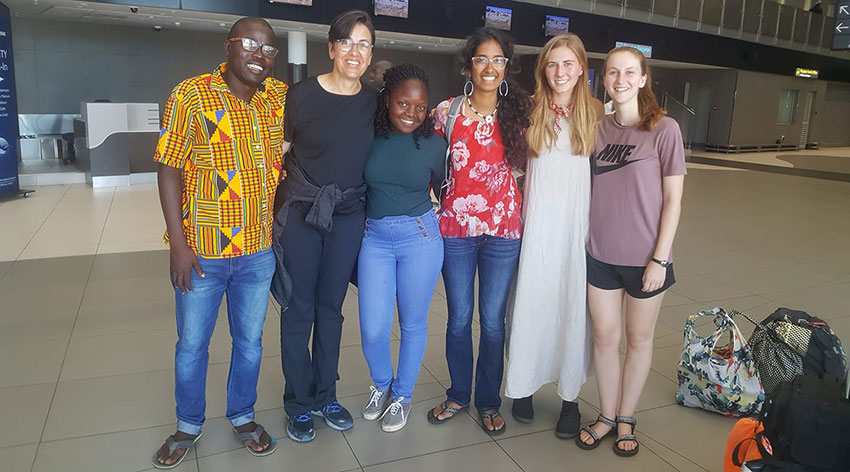
Our Project
We went to Botswana to work on two projects. The first was a mechanical engineering project in Lesoma with the goal of redesigning a crusher for Mumbaimbai seed pods. These seedpods can be used as detergent for clothes washing when crushed to a fine powder. We worked with members of the community to gather input and design a new crusher, followed by assembling it in the time we had left. After this short stop in Lesoma, we carried on to Tsodilo Village.
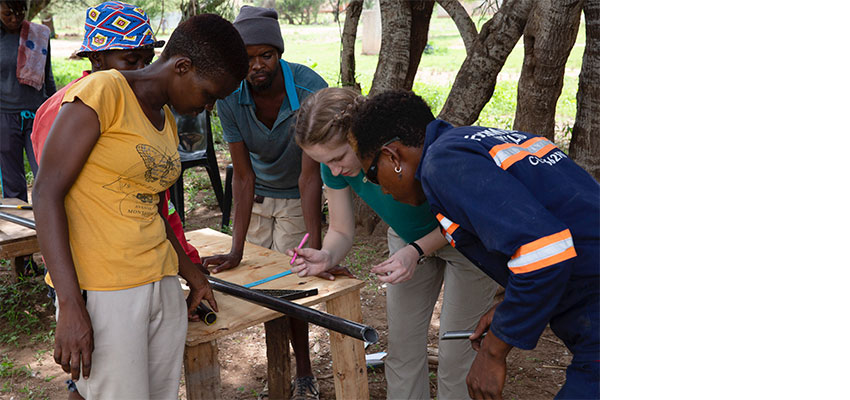
In Tsodilo, we ran a two-week Creative Capacity Building workshop. Our role as MIT students was to be “facilipants,” half facilitators and half participants. The workshop started with team-building activities to bring the community together and gain skills for communicating and working together that would be critical in the later project stages. We then moved on to the Build-it project, which was making a maize sheller, to teach the community members some basic technical skills. These skills included sawing, cutting tin, and using a hammer.

After the first few days, the facilitators gathered ideas from the community about projects that could be built to improve the daily lives of the people in the village. Five projects were ultimately chosen from more than 30 suggestions. These five projects were:
- creating an elephant repellent for farms
- building a brick oven for baking bread
- making charcoal briquettes to use as an alternative to firewood
- building a brick press to aid in building homes
- building a plow with two wheels so that it is more steady
Workshop attendees were split into five groups and spent the rest of the two weeks designing and building, redesigning and rebuilding.
In the end, we had a beautiful showcase for the village to demonstrate the results of two weeks of hard work. The elephant repellant created smoke infused with chili, the bread oven produced delicious rolls, the charcoal briquettes boiled a kettle of water for tea, the brick press produced strong bricks, and the two-wheel plow was much easier to control than a one wheel plow.
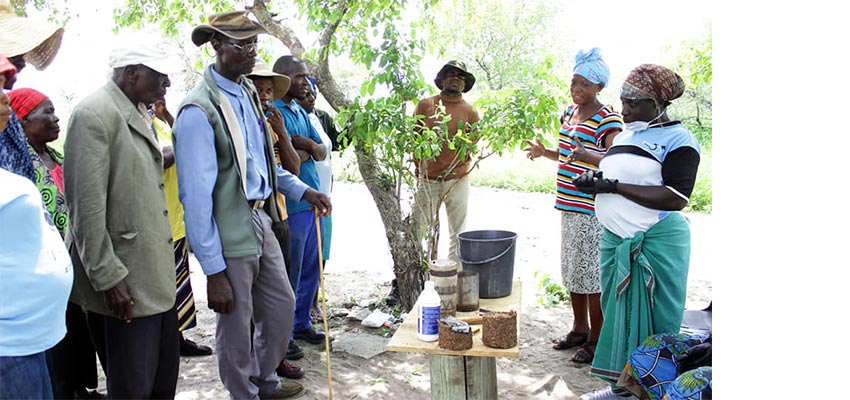
Trip Highlights
We climbed to the highest point in Botswana! Situated at 410 meters, the Male Hill is one of the three Tsodilo Hills that collectively create a UNESCO World Heritage site, and is indeed the highest point in the country. We hiked up the Male Hill as the sun rose over the mountain and the views were stunning. We had to wake up before 5 AM for our excursion. The journey started with a long and windy drive about five kilometers long from the entrance to the village to the entrance to the mountain. One wouldn’t expect this drive to take upwards of half an hour, but the road conditions were less than ideal and it was difficult to see. Our climb was hard. We were constantly scrambling over slippery rocks and hauling ourselves up steep slopes. The first big moment came when we reached an altitude higher than the Female Hill. We could see the entire Female Hill underneath us as the sun rose above it. We continued on, stopping often for water breaks and bananas. We made it to the top nearly two hours after we started, but it was definitely worth it. We took hundreds of photos of our accomplishment and the landscape surrounding us. We were guided by Leo, an attendee of our workshop. It was an exhausting morning but one that we will never forget.
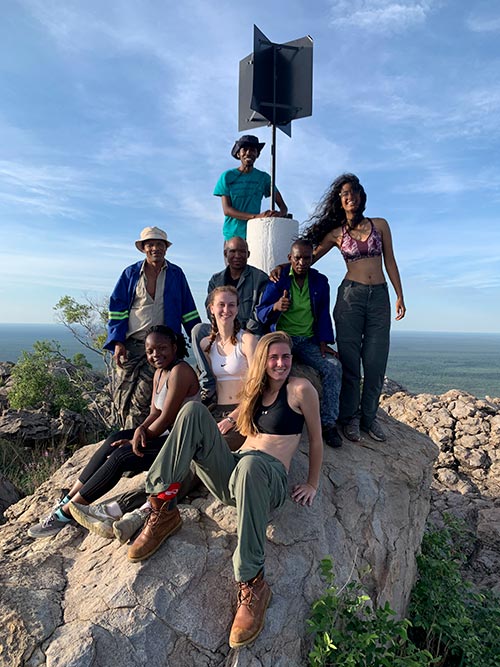
We also had the privilege of engaging with the community members when we attended a Kgotla. A kgotla is like a town meeting that happens in the villages of Botswana, usually run by the chief or a council. Kgotlas have taken place in Botswana since before it became a British protectorate, and have lasted through independence until today. All of the village members attend a kgotla, and this is where the people can air their grievances to the chief and sometimes to local government officials. At the kgotla we attended, we got to hear people from the community discuss the issues they are currently facing. One such issue is a school that was supposed to be built, but after five years, it is not completed. Children as young as six years old have to move away from their home and parents for an education because there are no schools in their villages. Another problem people face is the lack of a permanent health clinic in Tsodilo village. The issues continued to be discussed and the local representative from the government promised to talk with others in government in order to try to fix some of the problems. It was really cool to see how the government worked in a place that is different from the United States.
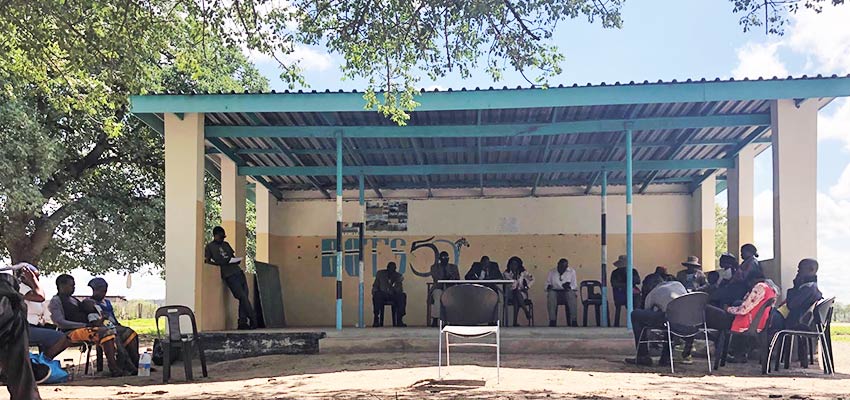
Community members gathering for the Kgotla in Tsodilo.

